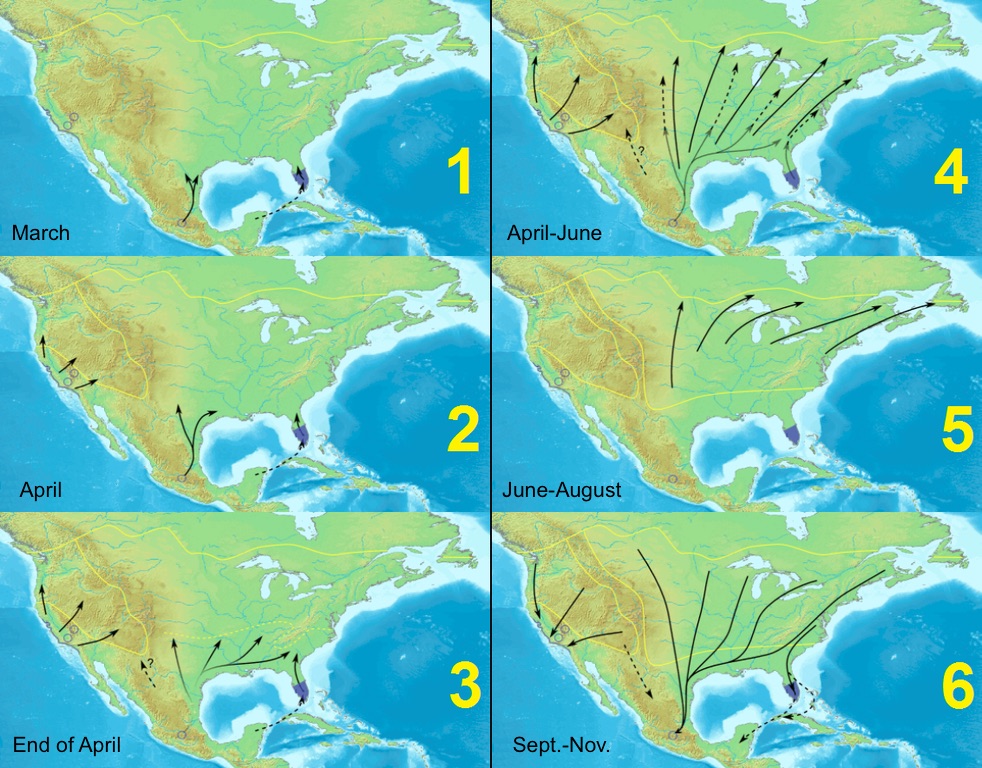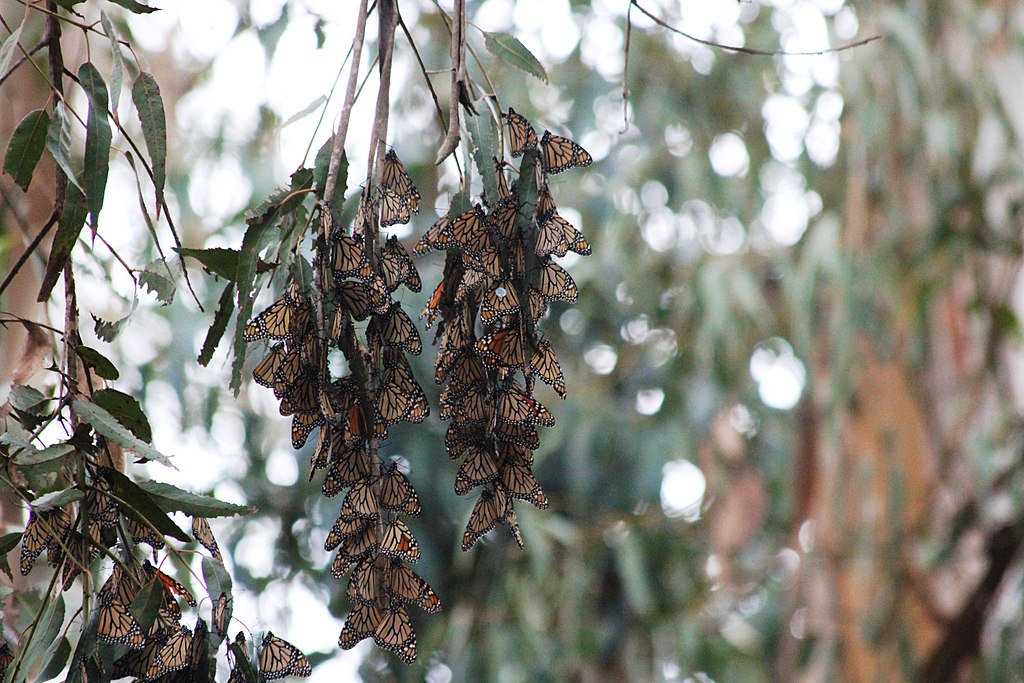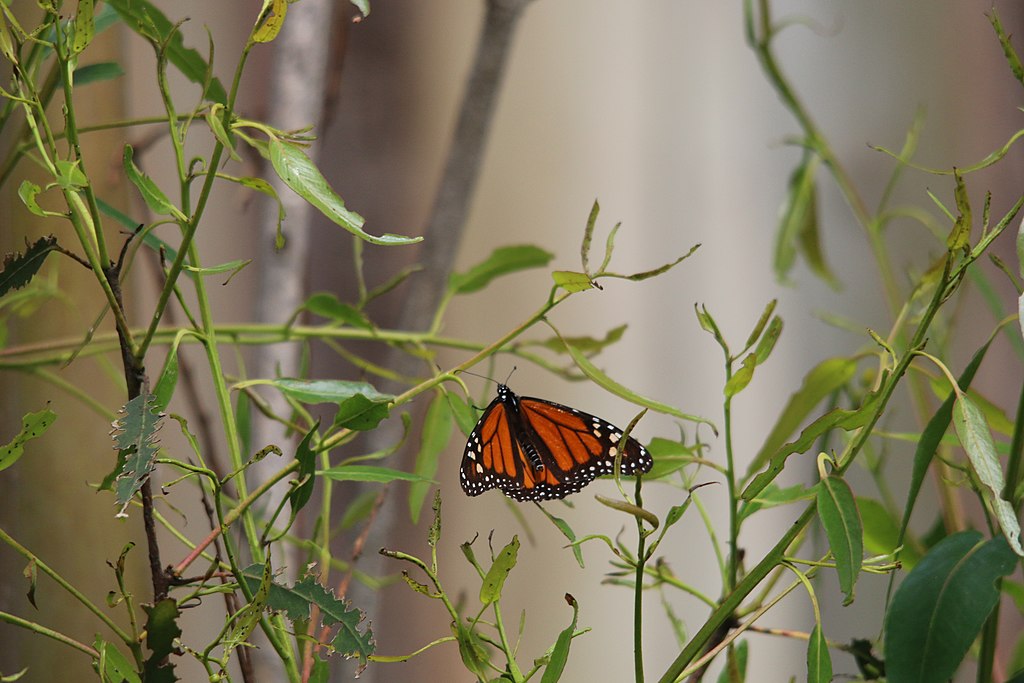Scientists are worried about Western monarch butterflies and are trying to understand why they’re struggling. To answer their questions, they’re asking people in the western US to send in any pictures of monarchs they take this spring.
Orange and black monarch butterflies are famous for their long migrations. They fly thousands of miles every year, flying north in the spring and summer, and south in the fall. Eastern monarchs fly all the way to Mexico for the winter.

(Source: docentjoyce [CC BY], via Wikimedia Commons.)
Western monarchs – the subject of this article – generally cover much shorter distances than other monarchs. Western monarchs spend the winter in central California. In the spring, they fly north and east – sometimes as far as Idaho. But recently, they seem to be covering less distance than before.
In 2018, Western monarchs had a terrible year. Their numbers dropped by 86%. Last year, their numbers weren’t much better. Scientists know that the butterflies don’t seem to be flying as far as they used to, but they don’t understand why.

(Source: Based on MonarchWanderungKlein.gif: Harald Süpfle/B kimmel [CC BY-SA 3.0], via Wikimedia Commons.)
That’s why scientists from several universities are asking anyone north of Santa Barbara who sees a monarch butterfly this spring to take a picture and send it to them.
By collecting the pictures, along with the date and location where the pictures were taken, the scientists hope to learn more about what happens to the butterflies after they leave their winter homes.

(Source: Pacific Southwest Region USFWS [Public domain], via Wikimedia Commons.)
All kinds of insects around the world are more threatened than ever these days. Insect numbers are dropping for many reasons, including changes in weather patterns because of the climate crisis, dangerous chemicals used in farming, and the loss of the plants that support insects as humans take over more land.
These problems affect Western monarchs, too. For example, the places along California’s coast where the butterflies spend the winter are now about 2º Fahrenheit (1.1º Celsius) warmer in the winter than they were 20 years ago. The use of pesticides on California’s large farms and green lawns is also a problem.

(Source: RedwoodResident [CC BY-SA], via Wikimedia Commons.)
Still, experts are hopeful that the monarchs can bounce back. Cheryl Schultz, a professor who is the project’s lead scientist, says, “My hope with Western monarchs is we can bring the population [numbers of butterflies] back up.”
If you’re able to take a picture of a Western monarch this spring before April 22, send the photo (along with the date, location, and species (kind of butterfly)) to: [email protected] The photos can also be uploaded with the iNaturalist app.
It’s okay if the picture is blurry or taken from far away, since the most important information is when and where the monarch was seen.

(Source: Pacific Southwest Region USFWS [Public domain], via Wikimedia Commons.)
Did You Know…?
Because of the coronavirus, people in California are being asked to stay home. It’s important to follow this advice. But keep your eyes open if you’re in your back yard, out for a run, or walking the dog. You just might spot one!
